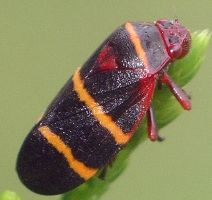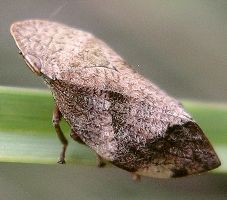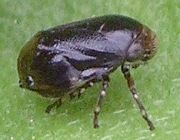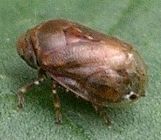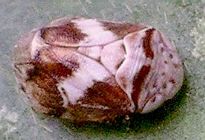
| Cercopidae ~ Spittlebugs |
|
Members of this small family are more easily recognized by the masses of white foam that they produce as nymphs than they are as adults. The larger species resemble leafhoppers and the smaller ones look like bits of dirt on leaves. Spittlebugs do not have long jumping legs armed with spines like leafhoppers do. There are also fewer kinds of them. The genera, though, tend to be so diverse that it is not easy to characterize the whole family. Instead, it is better to learn the few genera commonly found in this area.
  unidentified spittlebug nymphs and foam The most noticeable spittlebug adults are those of Prosapia bicincta, the Two-lined Spittlebug. As the name implies, they usually have two orange lines across their backs, but sometimes these can be lacking. They are about 10 mm long and shaped like a wide leafhopper. Their brilliant red/black/orange colors make them stand out and, when they have a good year and seem to be everywhere, many people wonder what they are.
A slightly smaller species that is much different in appearance is Lepyronia quadrangularis. These are brown insects, with an angular geometric form. They look like an origami creation folded out of paper. Rather blurred markings add to the corner effect. It is often hard to tell which end is the head, a useful trick to help evade predators.
The other very common genus in our area is Clastoptera. This group contains more species than most in the spittlebug family and they are a bit variable in markings, so I've never learned to recognize them beyond the genus level. They are very small, sometimes less than 2 mm long and never longer than about 3 mm. Males are smaller than females and they can frequently be seen mating. Where one insect looks like a bit of dirt or a fallen seed on a leaf, a pair just looks like more dirt. At least one species, though, has rather intricate markings.
|
![]()
